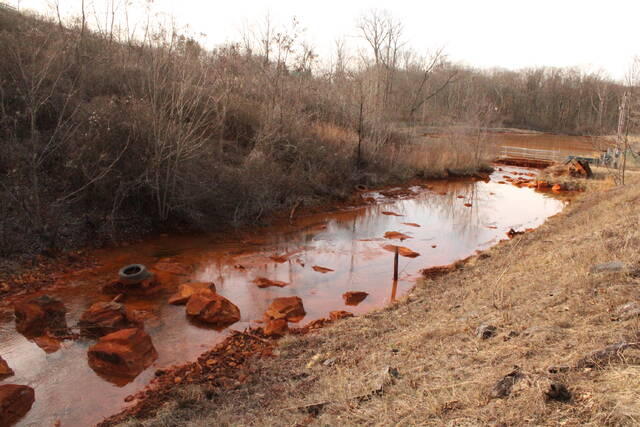Governor Tom Wolf today visited Pine Grove Furnace State Park in Cumberland County on July 30, 2021 to highlight the importance of outdoor spaces to our well-being during the pandemic and announce a plan for Pennsylvania’s state parks of tomorrow.
“Pennsylvanians can be proud that our state park system is among the best in the nation, and our Constitution guarantees our right to a clean environment, now and in the future,” Gov. Wolf said. “The opportunity to enjoy the beauty and recreational opportunities in state parks and forests was critical to our mental and physical health during the pandemic. As we get back on track, we need to ensure generations to come will have the same opportunities, and that all Pennsylvanians feel connected to their state parks.”
Penn’s Parks for All — A Plan for Pennsylvania’s State Parks of Tomorrow was developed with extensive public input and includes a set of strategies to move state parks forward over the decades ahead.
“More than a century of thoughtful acquisition, development and stewardship leave us well positioned to rise to new challenges and different public needs for our state parks, including that they are accessible and welcoming to all, that the aging system is well-cared for, and that it adapts to climate change and the changing recreation needs of visitors,” said Department of Conservation and Natural Resources (DCNR) Secretary Cindy Adams Dunn. “As economic drivers for nearby communities, state parks and outdoor recreation also are an important part of our recovery.”
This blueprint will help guide Pennsylvania’s state park professionals in carrying out the important work of caring for the 121 state parks in our system for the next 25 years.
The plan was built on a series of surveys conducted by Penn State in 2017 and 2018 to assess the attitudes and opinions of Pennsylvania state park visitors and the public regarding key issues affecting the future of the state parks.
There are 87 strategies that DCNR will begin to act on, including:
- Promote state parks as safe and welcoming;
- Evaluate and update visitor information and programs to include untold stories and improve inaccuracies of cultural stories;
- Improve transportation options to state parks to broaden access;
- Improve accessibility to all water-based recreation;
- Ensure state parks are adequately funded including reducing costs and improving efficiencies, demolishing buildings that are costly and have no historical significance, modernizing maintenance plans, minimizing duplication of outdoor recreational services, and increasing annual state appropriations for general operations so that fees collected in state parks can be used for maintenance;
- Identify the need for additional trails and trail connectivity from state parks to communities;
- Enhance river and stream-based recreational access;
- Work with stakeholders and communities on solutions to address high-density visitation and evaluate options to add to state park lands to meet growing demands;
- Partner with outdoor recreation businesses and organizations to pilot new activities;
- Meet increased demand and changing overnight accommodation needs;
- Work with concession operators to improve service including more environmentally sustainable operations and flexible options such as food trucks;
- Designate more areas that conserve ecological, geological, and cultural resources;
- Plan for ecological connectivity and species migration that responds to climate change;
- Eliminate mowed turf to improve habitat; and
- Develop a night sky management program and enhance night sky viewing.
“At the same time that visitation and demand for park services have grown to their highest levels, we recognize the need to fully understand and address safety and accessibility for all Pennsylvanians,” Director of the DCNR Bureau of State Parks John Hallas said. “Parks are the common property of all the people, and we need to provide a welcoming environment and reach in the highest levels of diversity, equity, and inclusion in our programs, services, and workforce.”
“Pennsylvania state parks are free and open to all, but that doesn’t mean that everyone can get to them, feels welcome, or uses them in the same ways,” said Pennsylvania Parks and Forest Foundation Ambassador Margarita Caicedo. “Our pride in our state parks will grow as we work to make them more inclusive, meet the recreation needs of diverse and new recreational users of all abilities, and provide information and programming to correct and tell new cultural stories.”
Pennsylvania’s 121 state parks total almost 300,000 acres. Together with DCNR’s state forest system, they are one of the largest expanses of public lands in the eastern United States.
With a state park within 25 miles of nearly every Pennsylvanian, information about the remarkable variety of types and sizes of parks located throughout the commonwealth is available on the DCNR website.




